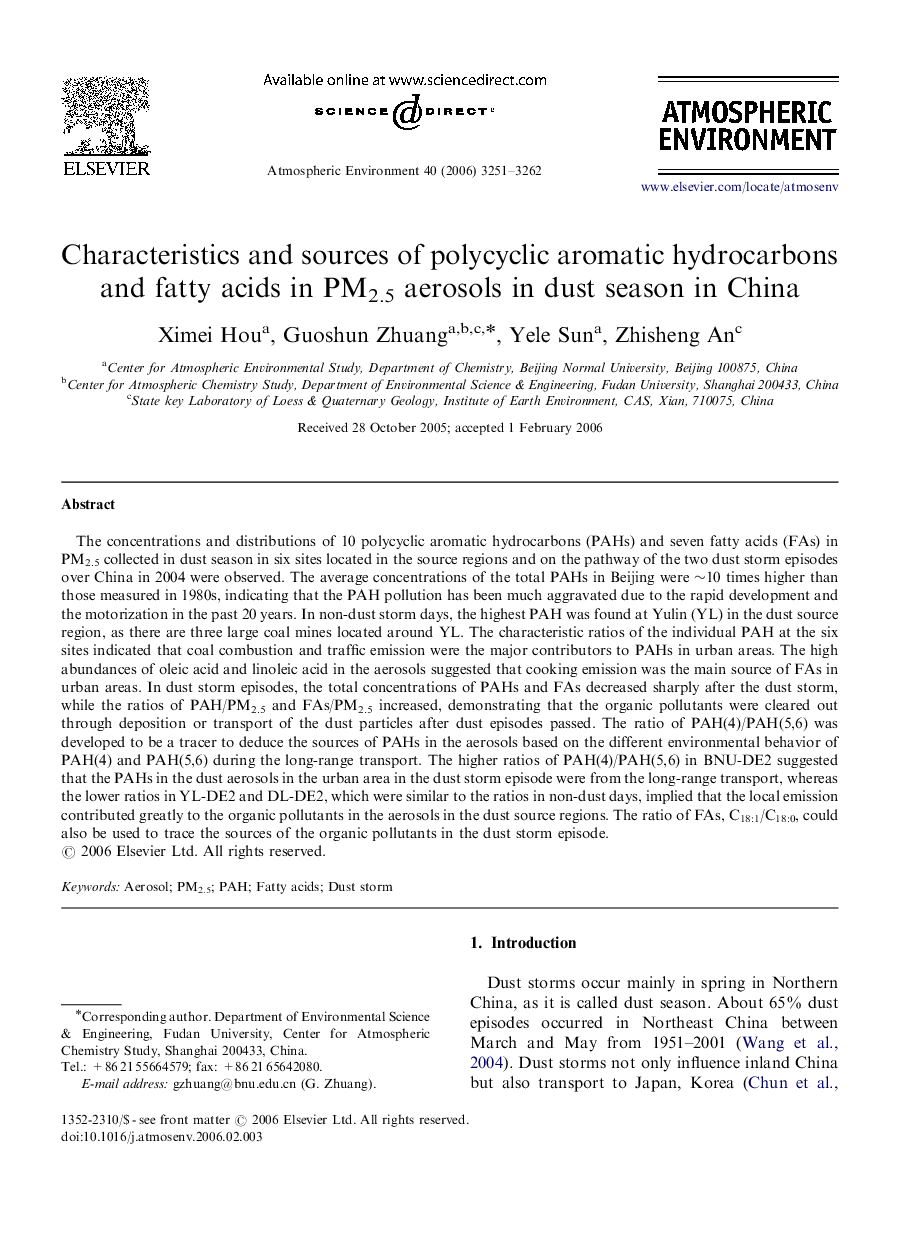| کد مقاله | کد نشریه | سال انتشار | مقاله انگلیسی | نسخه تمام متن |
|---|---|---|---|---|
| 4444826 | 1311257 | 2006 | 12 صفحه PDF | دانلود رایگان |

The concentrations and distributions of 10 polycyclic aromatic hydrocarbons (PAHs) and seven fatty acids (FAs) in PM2.5 collected in dust season in six sites located in the source regions and on the pathway of the two dust storm episodes over China in 2004 were observed. The average concentrations of the total PAHs in Beijing were ∼10 times higher than those measured in 1980s, indicating that the PAH pollution has been much aggravated due to the rapid development and the motorization in the past 20 years. In non-dust storm days, the highest PAH was found at Yulin (YL) in the dust source region, as there are three large coal mines located around YL. The characteristic ratios of the individual PAH at the six sites indicated that coal combustion and traffic emission were the major contributors to PAHs in urban areas. The high abundances of oleic acid and linoleic acid in the aerosols suggested that cooking emission was the main source of FAs in urban areas. In dust storm episodes, the total concentrations of PAHs and FAs decreased sharply after the dust storm, while the ratios of PAH/PM2.5 and FAs/PM2.5 increased, demonstrating that the organic pollutants were cleared out through deposition or transport of the dust particles after dust episodes passed. The ratio of PAH(4)/PAH(5,6) was developed to be a tracer to deduce the sources of PAHs in the aerosols based on the different environmental behavior of PAH(4) and PAH(5,6) during the long-range transport. The higher ratios of PAH(4)/PAH(5,6) in BNU-DE2 suggested that the PAHs in the dust aerosols in the urban area in the dust storm episode were from the long-range transport, whereas the lower ratios in YL-DE2 and DL-DE2, which were similar to the ratios in non-dust days, implied that the local emission contributed greatly to the organic pollutants in the aerosols in the dust source regions. The ratio of FAs, C18:1/C18:0, could also be used to trace the sources of the organic pollutants in the dust storm episode.
Journal: Atmospheric Environment - Volume 40, Issue 18, June 2006, Pages 3251–3262